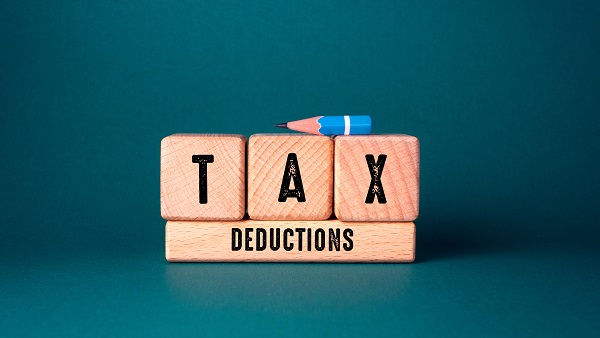TDS Rate Chart for Financial Year 2022-2023 (AY 2023-2024)

To minimise tax evasion and collect taxes directly from the source of income, the Income Tax Department introduced Tax Deducted at Source (TDS). TDS varies as per the nature of payment, age, and income of the assessee. Every financial year, various sections of the Income Tax Act determine TDS rates and threshold limits for different payments received by an assessee.
This article mentions the various TDS rates for Financial Year 2022-2023. Keep reading!
What is Tax Deducted at Source (TDS)?
Generally, persons who receive any payment that adds to their annual income are liable to pay income tax. To make taxation simpler, the government introduced TDS so that deduction of tax takes place before payment is made to an individual.
Under this mechanism, an individual (deductor) has to deduct TDS before making a payment to a deductee for services rendered. These payments include salary, rent, commission, interest, professional fee, etc. However, TDS deduction only applies to those individuals whose income is taxable.
A deductor is also responsible for depositing TDS with the government within the set due date. Through the tax collected from these payments, the government funds the expenses in relation to infrastructure, development, healthcare, defence, etc.
Meanwhile, if a higher tax amount gets deducted from a deductee’s income, he/she becomes eligible to receive TDS refunds. For this, one has to file TDS returns on time.
TDS Rate Chart for Financial Year 2022-2023
As per the Finance Bill, 2022, here is a table of TDS rates applicable on various payments made to individuals, HUFs, and others.
| Section | Nature of Payment | Threshold (in Rs.) | TDS Rate for Individuals and HUFs | TDS Rate for Others |
| 192 | Salary | Normal slab rate | Normal slab rate | |
| 192A | EPF Premature withdrawal | Rs. 50,000 | 10% | |
| 193 | Interest on securities | Rs. 10,000 | 10% | 10% |
| 194 | Dividends | Rs. 5,000 | 10% | 10% |
| 194A | Interest on bank deposit, post-office deposit, banking co-society deposit | Rs. 40,000 | 10% | 10% |
| 194A | Interest received by senior citizens | Rs. 50,000 | 10% | |
| 194B | Winnings from a lottery, card games, other games | Rs. 10,000 | 30% | 30% |
| 194BB | Winnings from horse race | Rs. 10,000 | 30% | 30% |
| 194C | Single payment to contractor | Rs. 30,000 | 1% | 2% |
| 194C | Consolidated payment to contractor | Rs. 1,00,000 | 1% | 2% |
| 194D | Insurance commission | Rs. 15,000 | 5% | 10% |
| 194DA | Payment of any sum upon maturity of life insurance policy | Rs. 1,00,000 | 5% | 5% |
| 194EE | National Savings Scheme (NSS) | Rs. 2,500 | 10% | 10% |
| 194F | Repurchase of a unit by Mutual Fund or Unit Trust of India | 20% | 20% | |
| 194G | Commission from lottery ticket sales | Rs. 15,000 | 5% | 5% |
| 194H | Commission or brokerage | Rs. 15,000 | 5% | 5% |
| 194I(a) | Rent from plant and machinery | Rs. 2,40,000 | 2% | 2% |
| 194I(b) | Rent from land, building, furniture | Rs. 2,40,000 | 10% | 10% |
| 194IA | Transfer of immovable property (other than agricultural land) | Rs. 50,00,000 | 1% | 1% |
| 194IB | Rent by Individual/HUF | Rs. 50,000 per month | 5% | |
| 194J(a) | Fee from technical service, call centre, royalty, etc. | Rs. 30,000 | 2% | 2% |
| 194J(b) | Fee from professional service, to a director, etc. | Rs. 30,000 | 10% | 10% |
| 194K | Income from the sale of units of mutual funds, units from specified companies or from the administrator | Rs. 5,000 | 10% | 10% |
| 194LA | Compensation on the transfer of an immovable property (other than agricultural land)If covered under RFCTLARR Act, TDS exempted | Rs, 2,50,000 | 10% | 10% |
| 194LB | Interest from infrastructure debt fund (non-resident) | 5% | 5% | |
| 194LBA | Income from units of business trust | 10% | 10% | |
| 194LBA | Income from units of business trust to non-residents | 5% | 5% | |
| 194LBC | Income from investment in securitization fund | 25% | 30% | |
| 194LD | Interest on certain bonds and government securities | 5% | 5% | |
| 194M | Commission payments, brokerage, professional fee by individual or HUF | Rs. 50,00,000 | 5% | |
| 194N | Cash withdrawal for amount more than Rs. 20 lakh and less than Rs. 1 crore | Rs. 1 crore | 2% | 2% |
| 194N | Cash withdrawal for an amount exceeding Rs. 1 crore | Rs. 1 crore | 5% | 5% |
| 194O | Income from the sale of good or services by an e-commerce operator through its digital platform | Rs. 5,00,000 | 1% | 1% |
| 194Q | Payments to resident buyers for the purchase of goods | Rs. 50,00,000 | 0.10% | 0.10% |
Also Read
Final Word
Considering that India has a large number of taxpayers, assessing their income tax can be a laborious task for the government. Tax Deducted at Source or TDS helps to streamline this process by directly deducting taxes upon payments made to an assessee.
Every year, the Finance Minister reveals changes to TDS rates depending on broader conditions affecting various sectors of the economy. To avoid paying more TDS than the determined rates, taxpayers must pay attention to the updates related to TDS rates every financial year.
FAQs
Ans: Under the TDS mechanism, an individual or group of persons is liable to deduct tax upon making a payment to a payee. Here, the payer is known as the deductor, and the individual who receives this payment is known as the deductee. Deduction of tax takes place from the income of a deductee.
Ans: All employers have the responsibility to deduct TDS from their employees’ income and deposit it with the Income Tax Department on time. However, if your employer delays in depositing TDS, you might not receive your TDS returns for the year. Meanwhile, your employer will face certain penalty charges.
Ans: There are four TDS certificates, Form 16, Form 16A, Form 16B and Form 16C. These certificates perform the role of providing TDS details between a deductor and deductee. Thus, those deducting TDS have to issue these certificates to assessees while making payments.
Ans: For every financial year, taxpayers can claim TDS returns while filing their income tax returns (ITR). Generally, if one files ITR on time, it takes 3 to 6 months to receive the refund amount in their bank account.
Ans: According to the Indian Tax laws, non-resident Indians are paid after TDS deduction in the case of certain payments. When an Indian resident buys property from an NRI, the former has to deduct 20% TDS + cess + surcharge. Meanwhile, if an NRI sells the property before two years of holding it, TDS increases to 30%.
Disclaimer
This article is solely for educational purposes. Navi doesn't take any responsibility for the information or claims made in the blog.
Read More on Income Tax Act

What is Form 26QB for TDS? How to Download and Submit it?
While purchasing a property, buyers are liable to pay various taxes. The Finance Act, 2013 made TDS... Read More »PF Withdrawal Rules 2023 – Rules, Documents Required and Types
EPF/PF Withdrawal Employees’ Provident Fund (abbreviated as EPF) is a popular retirement sav... Read More »Stamp Duty and Property Registration Charges in Delhi 2023
It is compulsory for property buyers in the Capital to pay stamp duty in Delhi during property regi... Read More »Income Tax Return – Documents, Forms and How to File ITR Online AY 2023-24
In India, it is mandatory for all taxpayers who earn more than the basic tax exemption limit to fil... Read More »What is Section 80CCD – Deductions for National Pension Scheme and Atal Pension Yojana
The Income Tax Act provides a number of deductions and tax benefits to taxpayers, so they can strat... Read More »Tax on Dividend Income: Sources, Tax Rate and TDS on dividend income
What are Dividends? Companies may raise funds for running their operations by selling equity. Th... Read More »Section 112A of Income Tax Act: Taxation on Long-Term Capital Gains
What is Section 112A? Section 112A of the Income Tax Act was announced in Budget 2018 to replace... Read More »Section 206AB of Income Tax Act: Eligibility And TDS Rate
Section 206AB was introduced in the Finance Bill 2021 as a new provision pertaining to higher deduc... Read More »What is a Credit Note in GST – Example, Format and Steps
A GST Credit Note is mandatory for any GST-registered supplier of goods or services. As a supplier,... Read More »Exemptions and Deductions Under Section 10 of Income Tax Act
What Is Section 10 of the Income Tax Act? Section 10 of the Income Tax Act, 1961 provides tax-sa... Read More »Section 57 of the Income-tax Act – Income from Other Sources
It is quite likely that many entities - individuals as well as businesses - have multiple sources o... Read More »What is Dearness Allowance? – Types, Calculation, and Current Rate
What is Dearness Allowance? Dearness Allowance Meaning - Dearness Allowance (DA) is an allowance... Read More »Top 10 Chit Fund Schemes in India in 2023
Chit funds are one of the most popular return-generating saving schemes in India. It is a financial... Read More »10 Best Gold ETFs in India to Invest in April 2023
Gold ETFs or Gold Exchange Traded Funds are passively managed funds that track the price of physica... Read More »10 Best Demat Accounts in India for Beginners in 2023
Creation of Demat accounts revolutionised the way trades were conducted at the stock exchanges. It... Read More »20 Best Index Funds to Invest in India in April 2023
What is an Index Fund? An index fund is a type of mutual fund or exchange-traded fund (ETF) that... Read More »Best Arbitrage Mutual Funds to Invest in India in April 2023
Arbitrage funds are hybrid mutual fund schemes that aim to make low-risk profits by buying and sell... Read More »10 Best SIP Plans in India to Invest in April 2023
What is SIP? SIP or Systematic Investment Plan is a method of investing a fixed amount in ... Read More »10 Best Corporate Bond Funds in India to Invest in April 2023
Corporate bond funds are debt funds that invest at least 80% of the investment corpus in companies ... Read More »10 Best Bank for Savings Account in India [Highest Interest Rate 2023]
Savings account is a type of financial instrument offered by several banks. It lets you safely depo... Read More »
































